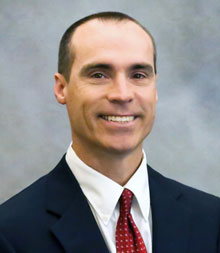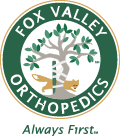
Message from Dr. Petsche…
Whether you or one of your family members or friends is considering shoulder rotator cuff repair, or are scheduled for surgery, I understand this can be a stressful time. And you may have forgotten some of the information we discussed during our last visit, or forgot to ask me a specific question about what to expect. This site is designed to help us stay connected, and to answer some of the most common questions patients ask me about shoulder rotator cuff repair.
If you’re scheduled for surgery, please sign up below to receive pertinent post surgical and recovery information from me via text message or email. I want to make sure that both you and your family members have timely information at your fingertips during the days, weeks, and months following your surgery…so you can get back to enjoying the activities you love.
Do you have a surgery date?
Click below to sign up for our post surgery and recovery information program.
RECOVERY TIME POINTS
7-10 days
You will have your first office visit. You will review surgical pictures and discuss the procedures. Please feel free to ask any questions.
6 weeks post-op
You will be able to discontinue your sling/immobilizer around this time. You may begin to use your arm for daily activities, but should not lift more than a few pounds. For exercise, you may do a stationary bike, walking, and some lower-body exercises but should avoid running or elliptical machines (this will cause too much jostling of the shoulder).
3 months post-op
You may continue to use your arm for daily activities, but should avoid any aggressive lifting or throwing motions. You should have very good motion of your shoulder at this time. For exercise, you may stationary bike, light jog, elliptical machine, and continue doing your physical therapy strengthening exercises.
3-4 months post-op
You will likely be finished with physical therapy by now. Please continue with your home exercise program! Keep in mind you still have some restrictions for your shoulder (until the 6 month point).
6 months post-op
If things have progressed as expected, you will likely be able to resume all activities as tolerated. Congrats- you no longer have any restrictions for your shoulder! Understand that full strength may still take a few more months.
MOST COMMON QUESTIONS
How should I be using my sling?
The sling should be worn at all times when you are up and walking around. While you are sitting/resting, you may remove the sling occasionally as long as your upper arm/shoulder stays near your body. You may gently bend and straighten your elbow, keeping your upper arm near the body. Typically the sling will be worn for 6 weeks to protect your surgical repair. However, the use of the sling may be individualized based on your surgery.
If you have an “arc” sling (with waist portion): The waist strap should be on to hold the shoulder in a slightly “abducted” position, which allows for less tension on the rotator cuff during the healing process.
What motions should I avoid?
Do not lift shoulder out in front of body, out to your side, or reach behind your back until your doctor or PA has told you to. Usually, it is 6 weeks before you’ll be moving the shoulder on your own. It is ok to bend/straighten your elbow and use your hand to do things like typing (as long as your shoulder stays near your body). For example, you should put a computer keyboard in your lap instead of reaching out on a table for your keyboard).
Initially in therapy, your therapist will do “passive motions,” which means your muscles won’t be doing the work. This protects your rotator cuff/labrum repair and allows your body to heal.
When can I drive?
Please do not attempt driving for 6 weeks after surgery. This is for your safety, as well as other drivers- please do not attempt to drive with only one hand. Reasons for no driving post operatively: A quick, reactive motion of the shoulder while driving could damage your surgical repair. Secondly, you should not drive while taking any narcotic pain medications.
How should I be sleeping?
Please try to wear the entire sling while you are sleeping for 6 weeks after surgery- this provides good support to the shoulder. Some people find it more comfortable to sleep upright (in a recliner chair) for a few days to weeks after surgery- this is optional.
What about pain medications?
Take the narcotic medication regularly for at least the first few days after surgery. If you have having minimal pain and would like to switch to a milder medication, please take Tylenol/acetaminophen (extra strength or regular). Do not take Tylenol and norco together (this would be too much acetaminophen). Do not exceed more than 4000mg of Tylenol/acetaminophen in a 24 hour period. After your rotator cuff repair/labral repair, try to avoid taking NSAID anti-inflammatories such as Advil (Ibuprofen), Motrin, and Aleve (Naproxen)- there are studies that show these anti-inflammatories may slow healing of your repair. If, for example, you get a headache and would like to take an occasional anti-inflammatory that is fine.
SPORTS SPECIFICS
We know you are eager to return to your sports and hobbies. We want to guide you safely through that process. Please use the following as a guide.
GOLF
8 weeks post-op: Putting
3-6 months post-op: Chipping
5-6 months post-op: Pitching, and half-swings with your short irons
6 months post-op: Full but gentle swings, slow and gradual return to play. Avoid bad lies. Avoid hitting too much of a divot.
8-12 months: Normal activity
BASKETBALL
3 months post-op: jogging, light dribbling drills
4-5 months post-op: Free-throws, light passing drills, light “shooting around,” but no contact
6 months post-op: Cautious return to play with less contact as you gain strength
8-12 months post-op: Normal activity
FOOTBALL
3 months post-op: Jogging.
4-5 months post-op: Agility/plyometric training with the guidance of a professional.
6 months post-op: Cautious return to play.
8-12 months: Normal activity.
WRESTLING
3 months post-op: Jogging
4-5 months post-op: Agility/plyometric training with the guidance of a professional
6 months post-op: Cautious return to play.
8-12 months: Normal activity.
BASEBALL/SOFTBALL
3 months post-op: Jogging
4-5 months post-op: light throwing drills (with guidance of physical therapist)
6 months post-op: Cautious return to play.
8-12 months: Normal activity.
WEIGHT LIFTING
Please follow the instructions of your physical therapist.
Once you are nearing the end of physical therapy (typically 3 months post-op), your therapist can create a safe “return-to-lifting” program. Physical Therapists and Athletic Trainers can outline a specific plan for you.



